The Press Room highlights computational astronomy work around the UC-HiPACC consortium; the wording of the short summaries on this page is based on wording in the individual releases or on the summaries on the press release page of the original source. Press releases below appear in reverse chronological order (most recent first); they can also be displayed by UC campus or DOE lab by clicking on the desired venue at the bottom of the left-hand column.
October 13, 2014 — Smartphone network could track incoming cosmic rays, UCI-led research finds

Calling all cosmic rays…. Calling all cosmic rays…
July 19, 2013 — Tiny neutrino that could solve cosmic mystery is observed shifting form
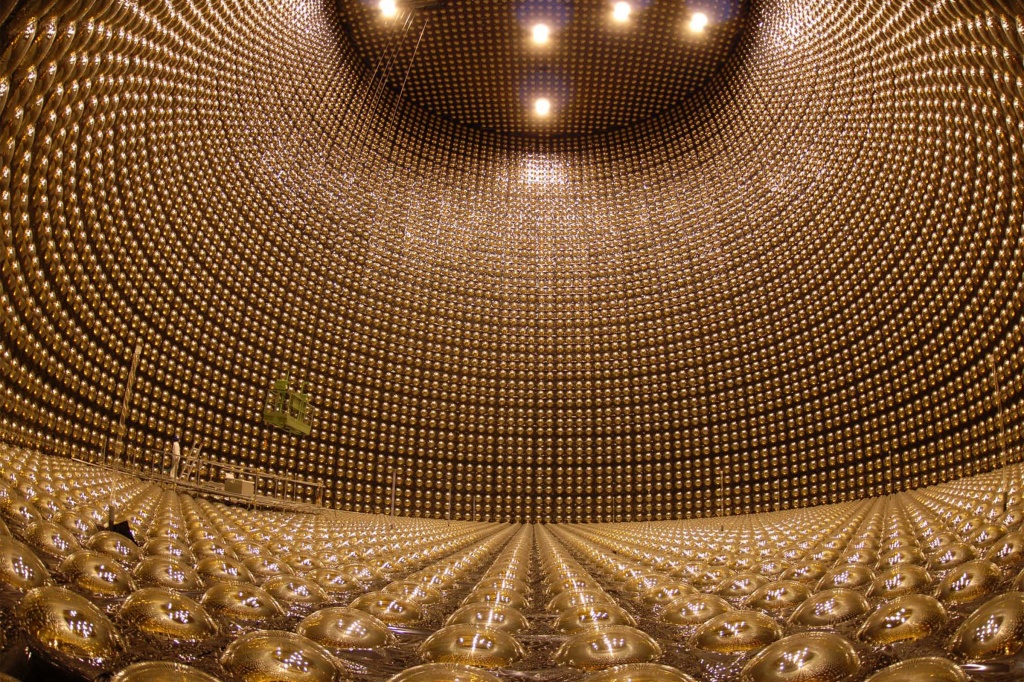
A researcher stands inside the Super-Kamiokande detector where physicists have confirmed that they observed the changing of muon neutrinos into electron neutrinos.
view full UCI Press Release
June 10, 2013 — UCI scientists size up universe’s most lightweight dwarf galaxy
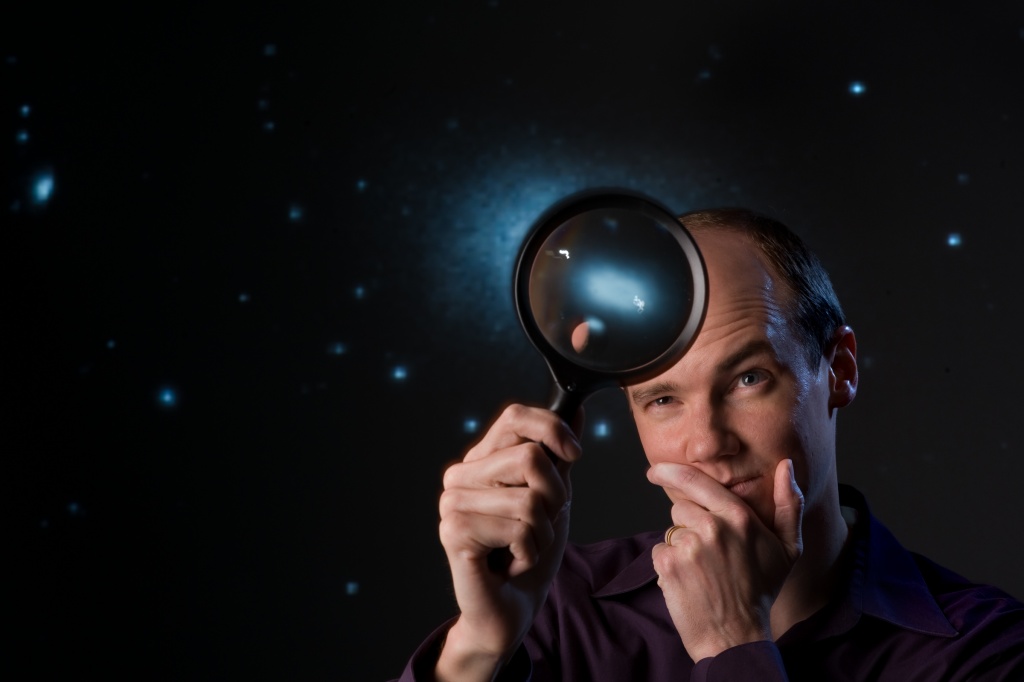
UC Irvine physics & astronomy postdoctoral scholar Evan Kirby is lead author of a paper documenting the least dense galaxy in the known universe, published today in The Astrophysical Journal.
view full UCI Press Release
May 22, 2013 — Fragile mega-galaxy is missing link in history of cosmos
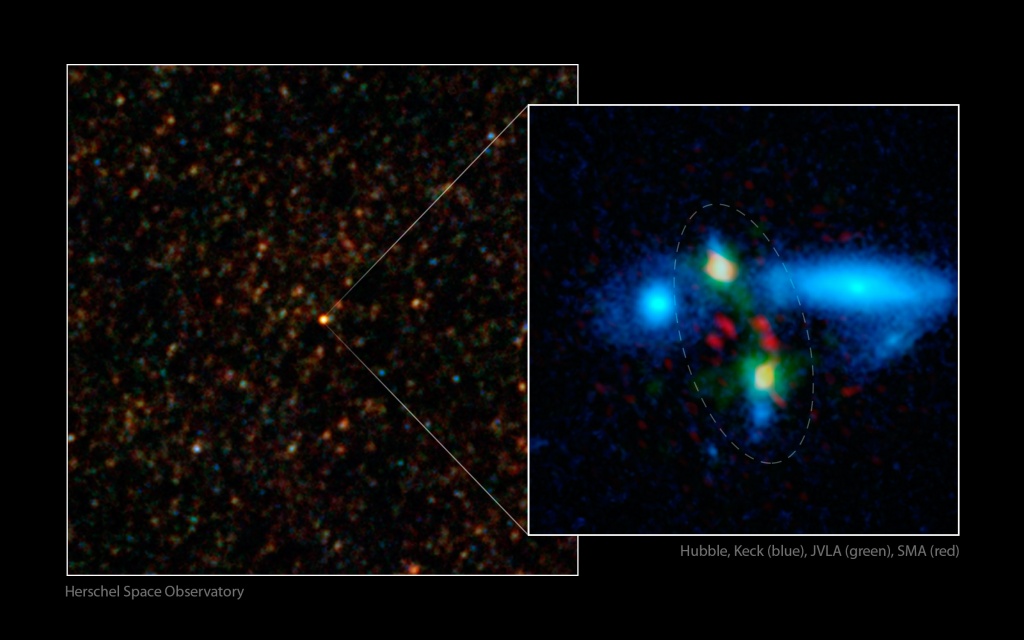
UC Irvine-led researchers teamed up using several telescopes to discover a rare and massive merging of two galaxies that took place when the universe was just 3 billion years old (its current age is about 14 billion years).
view full UCI Press Release
October 24, 2012 — Galaxy halos are produced by orphan stars, findings indicate
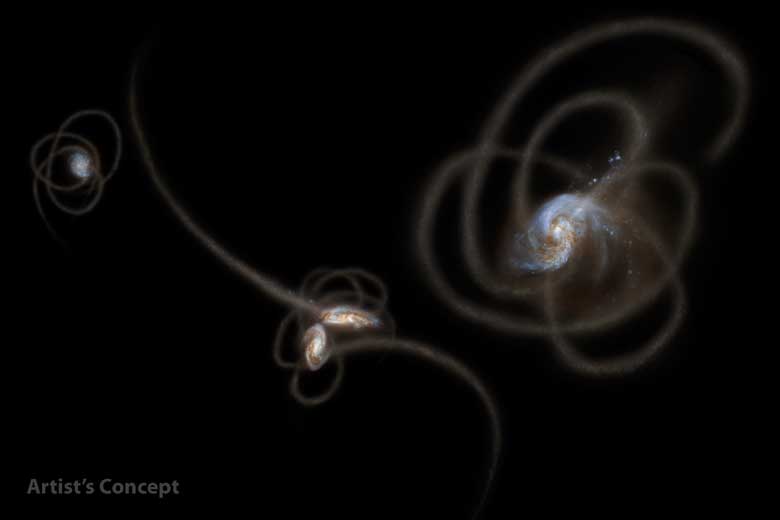
New research from UC Irvine scientists using NASA's Spitzer Space Telescope suggests that a mysterious infrared glow across our whole sky is coming from stray stars torn from galaxies. When galaxies grow, they merge and become gravitationally tangled in a violent process that results in streams of stars being ripped away from the galaxies.
“Background glow in our sky has been a huge unanswered question,” said UCI physics & astronomy professor Asantha Cooray, lead author of a paper about the discovery in the Oct. 25 issue of the journal Nature. “We have new evidence that this light is from stars that linger between galaxies. Individually, they’re too dim to be seen, but we think we’re seeing their collective blush.”
Cooray and colleagues examined 250 hours of data captured by NASA’s powerful Spitzer Space Telescope from a large swath of sky called the Boötes field, which covers the equivalent of 40 full moons near the constellation of the same name. The large scale allowed the researchers to better analyze the patterns of diffuse light.
view full UCI Press Release
August 13, 2012 — Gamma rays from galactic center could be evidence of dark matter
— Irvine, Calif., August 13, 2012 —
Gamma-ray photons seen emanating from the center of the Milky Way galaxy are consistent with the intriguing possibility that dark-matter particles are annihilating each other in space, according to research submitted by UC Irvine astrophysicists to the American Physical Society journal Physical Review D.
Kevork Abazajian, assistant professor, and Manoj Kaplinghat, associate professor, of the Department of Physics & Astronomy analyzed data collected between August 2008 and June 2012 from NASA’s Fermi Gamma-ray Space Telescope orbiting Earth. They found more gamma-ray photons coming from the Milky Way galactic center than they had expected, based on previous scientific models. Gamma-rays are electromagnetic radiation emitted during radioactive decay or other high-energy particle processes.
“This is the first time this new source has been observed with such high statistical significance, and the most striking part is how the shape, spectrum and rate of the observed gamma rays are very consistent with the leading theories for dark matter,” Abazajian said. “Future observations of regions with less astrophysical emission, such as dwarf galaxies, will be able to conclusively determine if this is actually from the dark matter.”..."
view full UCI Press Release
September 15, 2011 — Colliding Dwarf Galaxy Triggered Formation of Milky Way's Spiral Arms Revealed by Supercomputer Simulation at University of California, Irvine
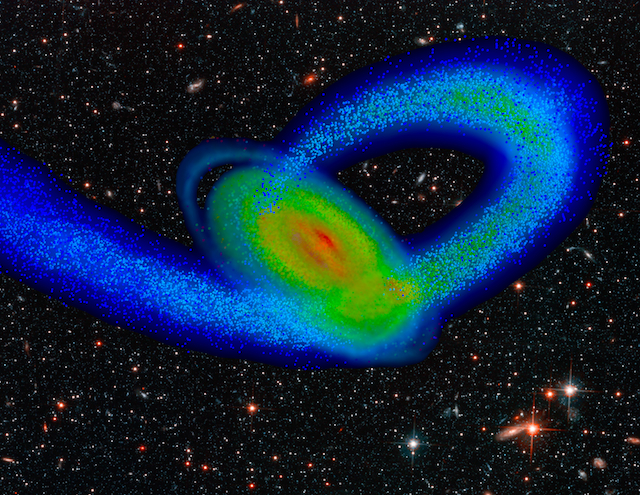
Incoming third impact of the Sagittarius Dwarf galaxy (blue stream of stars) with our Milky Way Galaxy (multicolored disk) was simulated by supercomputer and rendered by Erik J. Tollerud against a background of galaxies seen in the Hubble Deep Field.
view full Press Release
September 15, 2011 — Published in September 15, 2011 issue of Nature Magazine: Colliding Dwarf Galaxy Triggered Formation of Milky Way's Spiral Arms Revealed by Supercomputer Simulation at University of California, Irvine

View the UC-HiPACC Press Release
View the UCI Press Release